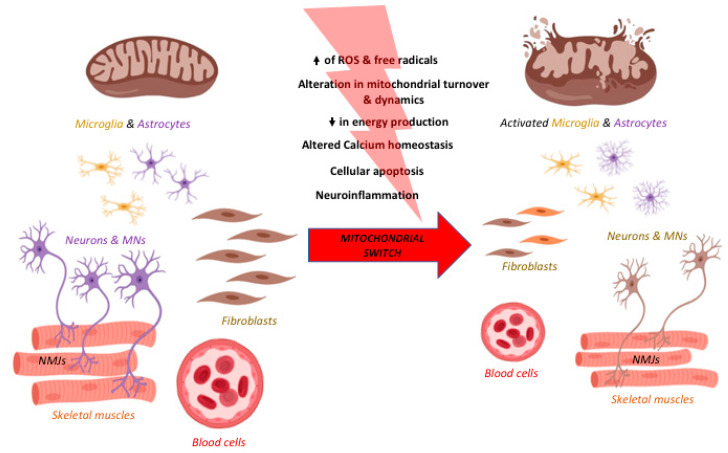Figure 2.
The process of neurodegeneration in the central nervous system (CNS), in the periphery and across diseases. Neurodegeneration is a progressive process taking place not only in the CNS but also in the periphery. After the accumulation of damage at the cellular and, in particular, mitochondrial level, the switch from physiology to pathology is fast and rarely reversible and it is occurring in many cell types. Indeed, it occurs in the CNS but also in the periphery, in particular the neuromuscular junction (NMJ), the skeletal muscles, blood cells, and fibroblasts. Moreover, the major pathways involved are linked to ROS and free radical formation, alterations in ATP formation, calcium homeostasis, apoptosis, mitochondrial turnover and dynamics, and neuroinflammation in terms of microglia and astrocytes activation. These pathways are affected in all the neurodegenerative diseases discussed in this review. Increase of ROS is represented by the black arrow pointing up and reduction in energy production by the black arrow pointing down. Created with BioRender software.

